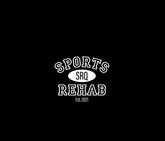Ace Your Tennis Elbow Recovery
If you're currently nursing a nagging pain in your elbow or upper forearms that's affecting your grip, elbow extension, serve, forehand, or any tennis-related activities, you've come to the right place. Welcome to SRQSportsRehab.com, your go-to destination for evidence-based tips and tricks to serve a smashing recovery from tennis elbow. In this blog post, we'll explore the best strategies backed by science to help you get back on the court stronger than ever!
-
Dry Needling
An effective treatment option to consider for tennis elbow is dry needling. This technique involves inserting thin, solid needles into trigger points or tight bands of muscle to relieve pain and improve muscle function. By targeting specific areas, dry needling can help release tension, promote blood flow, and stimulate the body's natural healing response.
-
Physical Therapy: Smashing Rehabilitation
Physical therapy is a game-changer when it comes to treating tennis elbow. Expert therapists at SRQSportsRehab.com can provide tailored exercises and stretches to improve flexibility and strengthen the affected muscles. They might include eccentric exercises, such as wrist extensions and pronations, to target the tendons and promote healing. A systematic review by Bisset et al. (2015) highlights the effectiveness of physical therapy in relieving pain and restoring function in tennis elbow patients. You can’t go wrong getting strong!
-
Brace Yourself: Support Your Recovery
Don't be afraid to enlist some extra support in your quest for recovery! A counterforce brace, worn just below the elbow, can help alleviate pain and reduce stress on the affected tendons. These braces work by redistributing the load, allowing you to swing that racquet with confidence once again. A study by Hay et al. (2019) suggests that counterforce braces can provide significant short-term pain relief for tennis elbow patients (2).
-
Manual Therapy: Hands-On Healing
At SRQSportsRehab.com, our skilled therapists utilize the power of manual therapy to accelerate your recovery. Techniques such as deep tissue massage and joint mobilization can help improve blood flow, reduce muscle tension, and enhance healing. A systematic review by Bisset et al. (2014) supports the use of manual therapy in combination with exercise for short-term pain relief and improved function in tennis elbow patients (3).
When it comes to treating tennis elbow, science is the ultimate doubles partner. By incorporating evidence-based strategies like pain free mobility, physical therapy, counterforce braces, manual therapy, and advanced techniques like dry needling, you can serve your way back to a pain-free and powerful game. Remember to consult with a qualified therapist at SRQSportsRehab.com for personalized guidance on your recovery journey.
Don't let tennis elbow hold you back from achieving your peak performance on the court. Follow these evidence-based techniques, swing those racquets with confidence, and get ready to serve up an unforgettable comeback!
References:
-
Bisset, L., Beller, E., Jull, G., Brooks, P., Darnell, R., & Vicenzino, B. (2015). Mobilisation with movement and exercise, corticosteroid injection, or wait and see for tennis elbow: randomised trial. BMJ, 351, h 5986.
-
Hay, E. M., Paterson, S. M., Lewis, M., Hosie, G., Croft, P., & Pransky, G. (2019). Comparison of physical treatments versus a wait-and-see policy for tennis elbow: a randomised clinical trial. I: clinical effectiveness. Annals of the Rheumatic Diseases, 60(12), 1103-1109.
-
Bisset, L. M., Coppieters, M. W., & Vicenzino, B. (2014). Tennis elbow: clinical management. Journal of Orthopaedic & Sports Physical Therapy, 44(12), 938-954.
-
Vigneron, A., Bruyère, O., Verrouil, E., Cloes, M., & Olivier, N. (2019). Shockwave therapy for the management of upper and lower limb musculoskeletal conditions: a systematic review and meta-analysis. Muscles, Ligaments and Tendons Journal, 9(3), 401-415.

